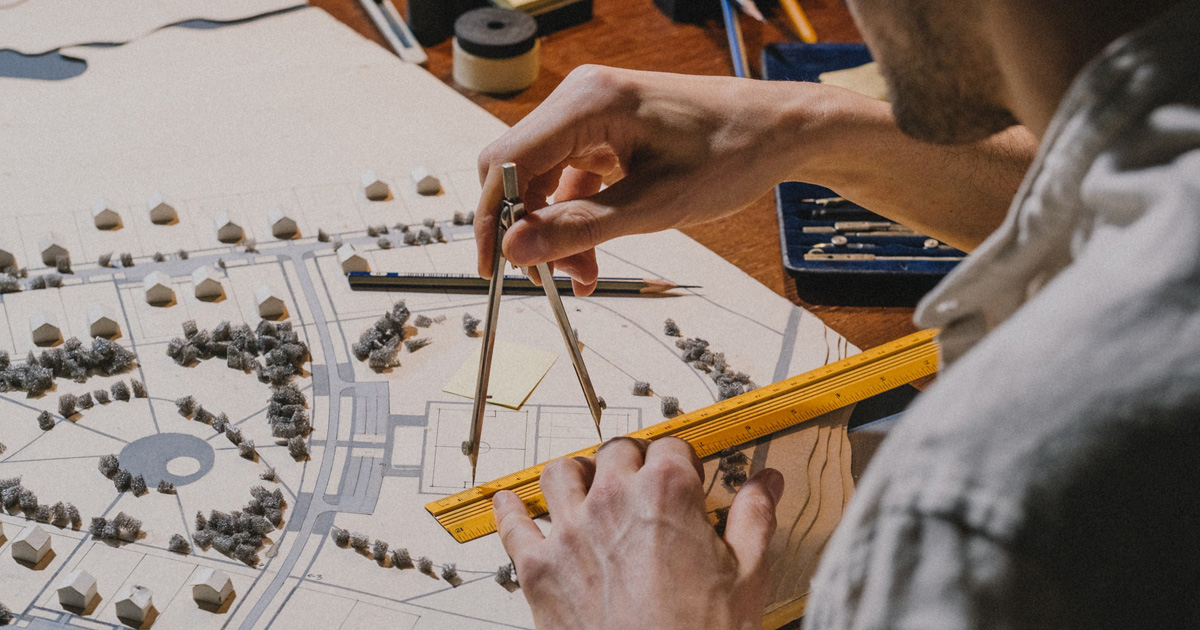Architect Portfolio Showcases That Win Over Clients Fast
Architect Portfolio Showcases That Win Over Clients Fast
Blog Article
Comprehending the Diverse Job Paths Available for Aspiring Architect
As a hopeful Architect, you have a world of profession courses waiting for you. Whether you're attracted to traditional design or the nuances of lasting layout, there's a particular niche that aligns with your interests.
Conventional Style: Creating Buildings and Structures
Conventional style concentrates on designing buildings and frameworks that blend performance with visual allure. As you explore this area, you'll appreciate the elaborate equilibrium in between type and objective. You'll learn to draw inspiration from historical styles, integrating elements like symmetry, materials, and craftsmanship. Your designs can reflect social heritage, showcasing local traditions while meeting modern needs.
You'll establish skills in drafting, model-making, and website evaluation, enabling you to visualize and connect your concepts successfully. Involving with clients, you'll need to understand their vision and convert it right into practical styles.
Additionally, building codes and sustainability techniques are necessary in your job, guaranteeing your structures are safe and eco friendly. As you grow in your job, you'll discover opportunities in residential, business, and even remediation tasks, each offering one-of-a-kind challenges. Welcoming conventional architecture leads the way for a satisfying career that admires the past while shaping the future.
Urban Preparation: Forming Neighborhoods and Public Spaces
As an aspiring Architect, you can play a vital role as a metropolitan coordinator, changing exactly how areas engage and function. By using community involvement techniques, you'll guarantee that homeowners have a voice fit their setting. Plus, integrating sustainable layout principles will aid create areas that not just meet today's requirements yet also secure the future.
Duty of Urban Planners
While lots of may believe of designers as the single visionaries behind buildings, city organizers play an important function in forming the wider landscape of neighborhoods and public spaces. By collaborating with numerous stakeholders, you'll assist make parks, transport systems, and property areas that promote social communication and accessibility. Your competence in spatial style and community characteristics enables you to picture future development while protecting cultural heritage.
Neighborhood Involvement Strategies
Reliable neighborhood involvement strategies are vital for metropolitan organizers to assure that the voices of locals are listened to and valued in the preparation procedure. To promote purposeful dialogue, you must prioritize open discussion forums and workshops where neighborhood participants can reveal their ideas and problems. By proactively listening and integrating comments, you'll develop areas that mirror the area's demands, inevitably leading to even more effective and lasting city settings.
Lasting Layout Concepts
When developing metropolitan rooms, including lasting layout principles is essential for creating settings that prosper both environmentally and socially. Consider incorporating eco-friendly spaces, like gardens and parks, to enhance biodiversity and boost air high quality.
Creating with water preservation in mind is also key-- assume regarding rainfall gardens and absorptive surfaces to manage stormwater. Entailing neighborhood participants during the preparation procedure guarantees that the areas you create satisfy their needs and encourage social communication. By accepting these concepts, you'll contribute to vivid, sustainable urban landscapes that benefit everybody.

Landscape Architecture: Creating Lasting Outside Atmospheres
As you explore landscape style, you'll discover important layout concepts that create beautiful and useful outside spaces. Lasting methods play an important function in making sure these environments grow while reducing ecological effect. And also, you'll discover a selection of occupation opportunities that enable you to make a real distinction in just how people communicate with nature.
Design Principles in Landscape
Understanding layout principles in landscape style is vital for creating sustainable exterior environments that balance with nature. You'll need to consider components like proportion, equilibrium, and scale to assure your designs feel natural and welcoming. Including native plants not just boosts biodiversity but also reduces water usage, making your landscape resistant. Consider the circulation of area and just how individuals engage with it; paths and seating locations should invite exploration and relaxation. Furthermore, pay focus to seasonal modifications, designing with materials that complement the surroundings year-round (Architect). By focusing on sustainability and aesthetic appeals, you can create outside rooms that improve the area and advertise well-being. Embracing these principles will certainly establish a solid structure for your job in landscape design.
Sustainable Practices Summary
Sustainable practices in landscape architecture not just concentrate on aesthetics yet additionally prioritize ecological wellness and resource preservation. By integrating native plants, you boost biodiversity and minimize the requirement for chemical fertilizers and pesticides. Applying reliable irrigation systems helps save water and lessens runoff, protecting neighboring communities. You can design rooms that promote dirt wellness, such as utilizing natural materials and exercising permaculture concepts. Additionally, incorporating environment-friendly facilities, like rain gardens and permeable pavements, aids in stormwater administration and minimizes metropolitan warm. When you create exterior settings with sustainability in mind, you add to a healthier world and give areas that cultivate neighborhood link. Inevitably, these practices guarantee your styles profit both people and the atmosphere for years to find.
Profession Opportunities Expedition
With a strong foundation in lasting practices, landscape architecture supplies a selection of profession paths that permit you to make a meaningful effect on the atmosphere. Urban planners usually collaborate with landscape engineers to produce green spaces in metropolitan settings, boosting city livability. If you're passionate concerning education and learning, think about becoming a landscape style teacher, motivating future generations.
Sustainable Layout: Concentrating On Eco-Friendly Practices
As you discover your profession in style, accepting environmentally friendly techniques can set you apart in an affordable field. Sustainable layout concentrates on creating buildings that decrease ecological influence while enhancing resident well-being. By integrating renewable materials, energy-efficient systems, and lasting structure techniques, you'll add to a greener future.
Start by getting expertise of green qualifications like LEED or BREEAM, which can strengthen your credentials. Take into consideration how natural light, air flow, and thermal performance can optimize design. Work together with designers and ecological consultants to innovate options that minimize waste and conserve resources.
Don't fail to remember the value of area involvement-- interesting local stakeholders can influence styles that balance with the setting. As customers significantly focus on sustainability, your knowledge in green techniques check here will certainly not just bring in tasks yet also fulfill your passion for responsible architecture. Embrace this crucial aspect of the profession, and watch your career flourish.
Historic Conservation: Shielding and Recovering Social Heritage
While you begin on your building journey, consider the essential role of historical conservation in keeping our cultural heritage. This field concentrates on the defense and repair of considerable buildings, sites, and frameworks that inform the tales of our past. By participating in historical preservation, you'll help guard the building tradition that forms area identity.
As a historic conservation Architect, you'll examine historic value and evaluate the problem of frameworks. You'll work carefully with preservationists and chroniclers to guarantee genuine restoration strategies are employed. This job path permits you to blend creative thinking with research study, allowing you to develop solutions that appreciate original products and craftsmanship.
Your work not just adds to sustainability by reusing existing structures but likewise fosters a sense of satisfaction within communities. Welcoming this path will aid you become a guardian of history, maintaining the tales and aesthetics that enhance our lives.
Inside Architecture: Enhancing Indoor Spaces
Historic conservation and indoor style both share a commitment to improving the constructed environment, but they concentrate on various facets. While historic preservation stresses preserving a framework's social and historical worth, indoor architecture zeroes in on enhancing interior rooms for functionality and looks.
As an ambitious Architect, you'll find that indoor architecture enables you to mix creativity with technical abilities. You'll design areas that not only look excellent yet also promote convenience and effectiveness. This area involves comprehending exactly how light, shade, and products connect within a room, impacting mood and use.
You'll deal with various jobs, from residential homes to commercial workplaces, guaranteeing that each atmosphere meets the needs of its residents. By prioritizing individual experience, you can change insides right into practical and motivating spaces, making a substantial effect on exactly how people connect with their environments. Welcome the chance to enhance interior atmospheres and form the way individuals function and live.
Industrial Style: Merging Capability With Appearances
Commercial style plays a crucial duty in producing products that seamlessly mix visual appeals with capability, making sure that what you make use of everyday is not just aesthetically appealing however likewise useful. As a hopeful Architect, you could engage yourself in this field, concentrating on developing whatever from furniture to consumer electronic devices. Your job includes comprehending individual demands, materials, and manufacturing processes, allowing you to create innovative solutions that boost day-to-day experiences.
In industrial layout, you'll usually team up with producers, marketing experts, and designers, making certain that your designs are not just gorgeous but additionally practical. This job course offers a dynamic atmosphere where creative thinking meets practicality, making it a fulfilling selection for engineers interested in shaping the items of tomorrow.
Frequently Asked Questions
What Educational Accreditations Do I Required to Become an Engineer?
To become an architect, you'll require a specialist degree in style, normally a Bachelor's or Master's. In addition, you'll have to complete a teaching fellowship and pass the Architect Registration Examination to exercise legitimately.
Exist Certification Needs for Various Building Profession Paths?
Yes, there're qualification demands for different architectural courses. Architect. You'll require to pass examinations, complete teaching fellowships, and sometimes go after specialized training, depending on your chosen focus, like landscape design, city design, or historical preservation
What Software Application Abilities Are Vital for Engineers Today?

Just How Can I Gain Practical Experience While Researching Architecture?
You can obtain sensible experience by interning at architectural companies, joining layout competitions, volunteering for area jobs, or collaborating with schoolmates on real-world projects. These possibilities enhance your abilities and develop useful links in the industry.
What Job Opportunities Exist Outside Standard Design Firms?
You can discover various work opportunities outside traditional style companies, like city preparation, interior decoration, landscape architecture, construction administration, realty development, or also functions in sustainability consulting. Each offers one-of-a-kind difficulties and incentives.
Whether you're drawn to typical architecture or the subtleties of sustainable layout, there's a specific niche that aligns with your rate of interests.When creating metropolitan areas, including lasting style principles is crucial for creating environments that grow both environmentally and socially.As you check out landscape architecture, you'll find necessary design principles that create useful and beautiful exterior areas.Recognizing design principles in landscape design is vital for creating sustainable outdoor atmospheres that harmonize with nature.In industrial style, you'll commonly team up with engineers, online marketers, and makers, ensuring that your designs are here not just stunning yet additionally possible.
Report this page